Freemind vs MindMeister
June 18, 2023 | Author: Adam Levine
10
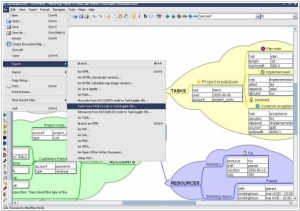
FreeMind is a premier free mind-mapping software written in Java. The recent development has hopefully turned it into high productivity tool. We are proud that the operation and navigation of FreeMind is faster than that of MindManager because of one-click "fold / unfold" and "follow link" operations.
19
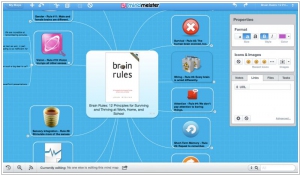
We've built MindMeister from the ground up to facilitate collaboration. Because of its sleek design and simple to use interface, MindMeister has been positioned as the number one mind mapping and online collaboration tool available today. Behind the product is a very strong team of developers following the company's philosophy of bringing the very latest advancements in web 2.0 technology to you.
See also:
Top 10 Mind Mapping software
Top 10 Mind Mapping software
Freemind and MindMeister are both popular mind mapping tools, but they have distinct features and cater to different user needs. Freemind is an open-source software that focuses on providing a straightforward and efficient mind mapping experience. It offers a simple interface and basic functionalities for organizing ideas and creating hierarchical mind maps. Freemind is suitable for individuals who prefer a lightweight and customizable mind mapping solution. On the other hand, MindMeister is a dedicated online mind mapping platform that offers a user-friendly interface, collaboration features, and various customization options. It emphasizes collaboration and enables teams to work together in real-time, making it ideal for brainstorming sessions, project planning, and knowledge sharing.
See also: Top 10 Mind Mapping software
See also: Top 10 Mind Mapping software
Freemind vs MindMeister in our news:
2017. MindMeister allows to mindmap in Microsoft Teams
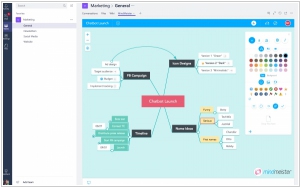
Mind mapping service MindMeister has introduced integration with Microsoft Teams' group chat feature. To utilize this integration, simply add a MindMeister tab to your Teams channel, enabling you to capture all your thoughts and plans within a mind map. This integration allows your team's conversation to continue seamlessly, while simultaneously allowing everyone to contribute to the map, ensuring that no important details are overlooked. The mind map format is highly effective for visualizing project plans, outlining strategies, brainstorming ideas, and taking concise meeting minutes. By using MindMeister within Microsoft Teams, you can collaboratively create mind maps without the need to switch between multiple tools, ensuring that everyone in your team remains on the same page throughout the collaborative process.
2017. MindMeister introduced all-new public map library
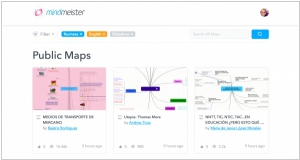
The public mind map library of MindMeister currently houses an extensive collection of nearly 400,000 maps, with numerous new creations being added on a daily basis. The newly revamped public map library features a fresh and user-friendly interface, making navigation easier. It adopts a layout similar to YouTube, encouraging commenting, liking, and sharing of maps. While these interactive features were already available in the previous library version, they now occupy a more prominent position, transforming the passive viewing of maps into an engaging community experience. The showcased maps are now categorized, allowing users to quickly browse through the top maps in each category. Clicking on a map thumbnail opens the map in a separate view that provides ample space for vibrant comment discussions. Users can directly view the mind map itself on the page, and as always, they have the ability to zoom in and out, expand and collapse branches, reposition the map, and access attached notes, links, videos, and more.
2017. MindMeister unifiers apps for iOS and Android
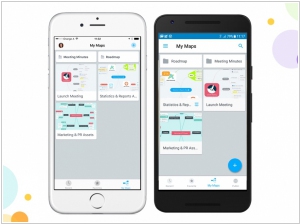
The latest versions of the MindMeister apps for iOS and Android offer a convenient and efficient way to create, edit, and collaborate on mind maps while on the go. These new apps showcase a refreshed map selection layout, presenting all mind maps in a grid format. By switching between tabs, users can quickly browse through thumbnail previews of each mind map, simplifying the process of finding and selecting the desired one. Both the iOS and Android apps enable users to create and edit mind maps and map folders. Real-time collaboration is supported across the mobile and web versions of MindMeister, allowing for seamless teamwork. Users can easily share mind maps directly from their devices and customize them with icons, colors, styles, and map themes. Additionally, the apps provide features such as creating, viewing, and editing notes, links, tasks, and attachments within mind maps. Drawing connections between nodes, delivering presentations, and exporting maps in RTF, PDF, and PNG formats are also supported. Furthermore, the apps ensure smooth synchronization of maps and folders with users' web-based accounts. However, it's worth noting that the app can be used as a stand-alone tool, even without a web-based account. These updated MindMeister apps for iOS and Android empower users with enhanced flexibility and convenience for mind mapping, making it easier to capture, organize, and collaborate on ideas anytime and anywhere.
2017. Freemind - free MindNode alternative
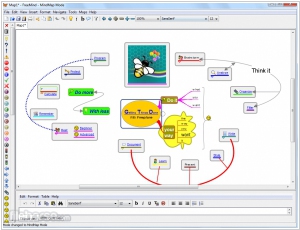
FreeMind is a mind-mapping software that operates on an open-source framework, providing competition to solutions such as MindNode and other similar tools. The software employs a familiar structure of points (referred to as nodes in FreeMind) branching out from a central topic, with additional nodes stemming from each branch. However, FreeMind truly distinguishes itself with its user-friendly click-and-drag interface, facilitating quick editing. Additionally, it offers HTML support, simplifying the sharing and navigation of your mind maps. Despite its somewhat outdated appearance and cumbersome menu system, FreeMind shines with its ease of use, offering convenient keyboard shortcuts for common tasks such as creating new nodes and applying formatting to ensure organizational efficiency. With a bit of time spent mastering its shortcuts, you'll discover that FreeMind is an incredibly valuable tool for project planning, exam preparation, and brainstorming new ideas.
2016. MindMeister gets new look and feel
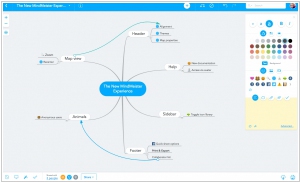
The mind map editor MindMeister has undergone a subtle redesign, featuring updated button styles and repositioning of elements on the top, bottom, and sides of the interface. Notably, the old popover display for the icon library has been replaced, and users can now simply click on the small gray arrow next to the last visible icon in the sidebar to effortlessly switch between the standard sidebar view and the new, visually appealing icon library. Map settings, which can be accessed by clicking the (i) button in the top bar, now include map themes, map alignment options, and map properties. Additionally, the alignment options have been replaced with a recenter button located below the zoom function.
2016. MindMeister integrated with Confluence
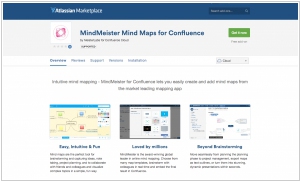
The popular mind-mapping tool, MindMeister, has expanded its integration capabilities by introducing integration with the Confluence wiki collaboration tool developed by Atlassian. Confluence offers a range of practical features that enable teams to collaborate, share, and discuss their work effectively. With this update, MindMeister is now available as an add-on in the Atlassian Marketplace. Users can create mind maps using MindMeister's award-winning map editor directly within Confluence, eliminating the need to switch between platforms. Furthermore, the integration allows for seamless embedding of mind maps within Confluence pages, facilitating easy access and reference for team members.
2013. Freemind 1.0 adds real-time collaboration
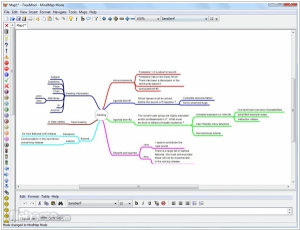
The latest iteration of mind-mapping software FreeMind has been launched, marking its first official version by number, although not its initial release. This update introduces significant new functionalities such as cloning, collaboration, and geographical maps. Users can now clone nodes and their sub-nodes, ensuring synchronization between the two copies. Multiple individuals can collaborate simultaneously on the same map, fostering efficient teamwork. Additionally, the ability to restore complete sessions has been implemented. Another notable addition is location-based mind mapping, offering users enhanced context for their maps. Furthermore, the inclusion of a spell checker serves as a valuable usability enhancement.
2007. MindMeister - the new tool for mind-mapping
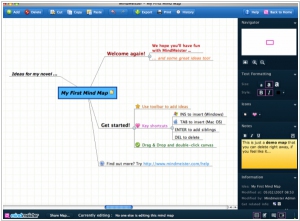
Today marks the launch of the new mind-mapping service, MindMeister. This platform is specifically designed to facilitate collaboration, boasting a sleek design and user-friendly interface. Among its array of features, MindMeister offers the capability to export mind maps to MindManager and Freemind, auto-layout for imported maps, zoom in/out functionality, an overview navigator, an expanded collection of icons and colors, support for adding notes to ideas, and notifications via email and text message (including text alerts through Twitter) for map changes. The development of this product is backed by a highly skilled team of developers who adhere to the company's philosophy of delivering the latest advancements in web 2.0 technology to users like yourself.



